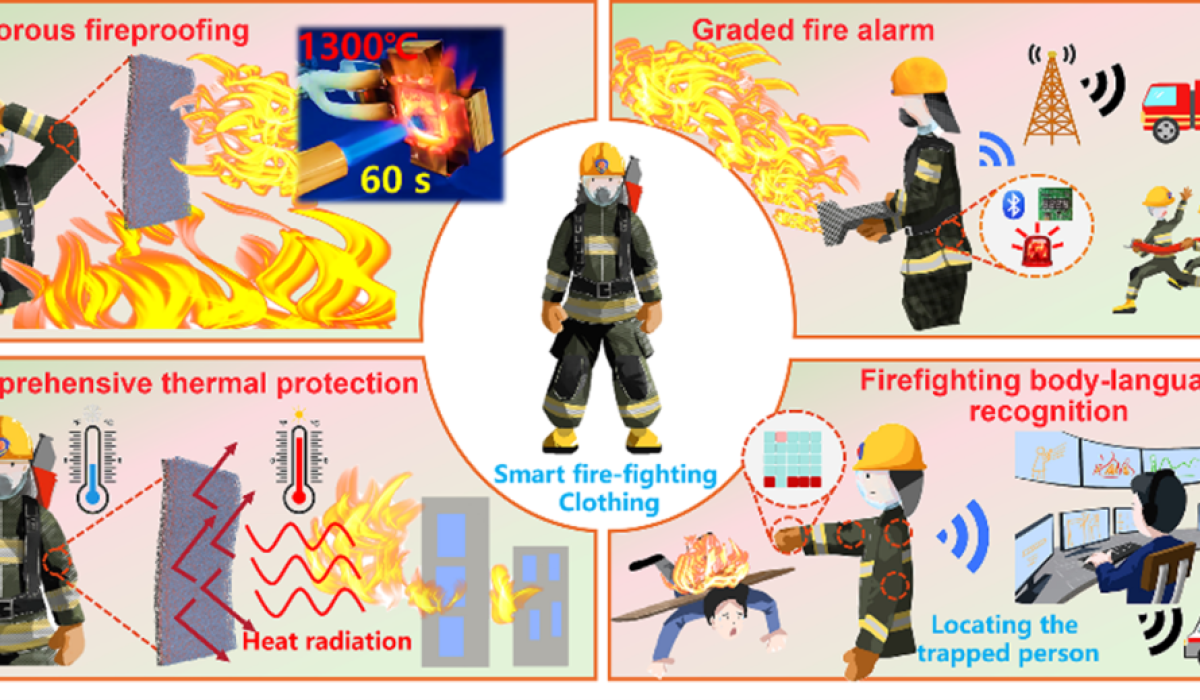The acceleration of urbanization has led to a higher frequency of fire incidents. While traditional firefighting clothing provides basic protection, it lacks the ability to sense environmental dangers or monitor firefighters’ physiological status in real time. Consequently, smart firefighting suits with integrated “protection-sensing-decision” capabilities have become a major research focus. However, many current smart textiles fall short in fire resistance and thermal protection, creating a significant performance gap compared to the flame-retardant layer (FU) in active-service gear. Enhancing rigorous fireproofing and thermal protection is therefore a critical challenge for smart firefighting fabrics.
Recently, a team led by Prof. Xiang Dong at Anhui University of Science and Technology published a study in Advanced Fiber Materials titled “Rigorous Fireproofing, Thermal Protection, Graded Fire Alarm and Body Language Recognition: Designing Nano-Coated Aramid for Smart Firefighting Clothing.” This work developed a nano-composite coated aramid material (NCANF) based on AgNP@PDA@M(OH)(OCH3) (M=Co, Ni). Upon fire exposure, this material forms a unique “metal-char-air” honeycomb buffer layer through interfacial catalysis and high-temperature reduction, significantly enhancing its high-temperature protective performance.
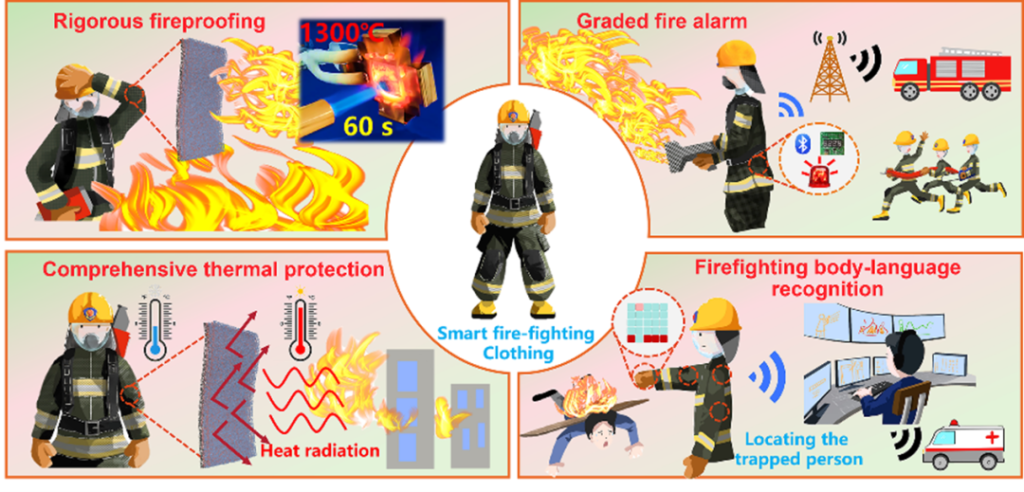
Innovative Nano-Coating on Aramid Fiber
The research team utilized a novel two-dimensional nanomaterial, AgNP@PDA@M(OH)(OCH3), constructed via a layer-by-layer self-assembly technique to create the NCANF. Characterization confirmed the successful coating application onto the aramid fiber substrate, with the aramid fiber remaining the core component of the composite material.
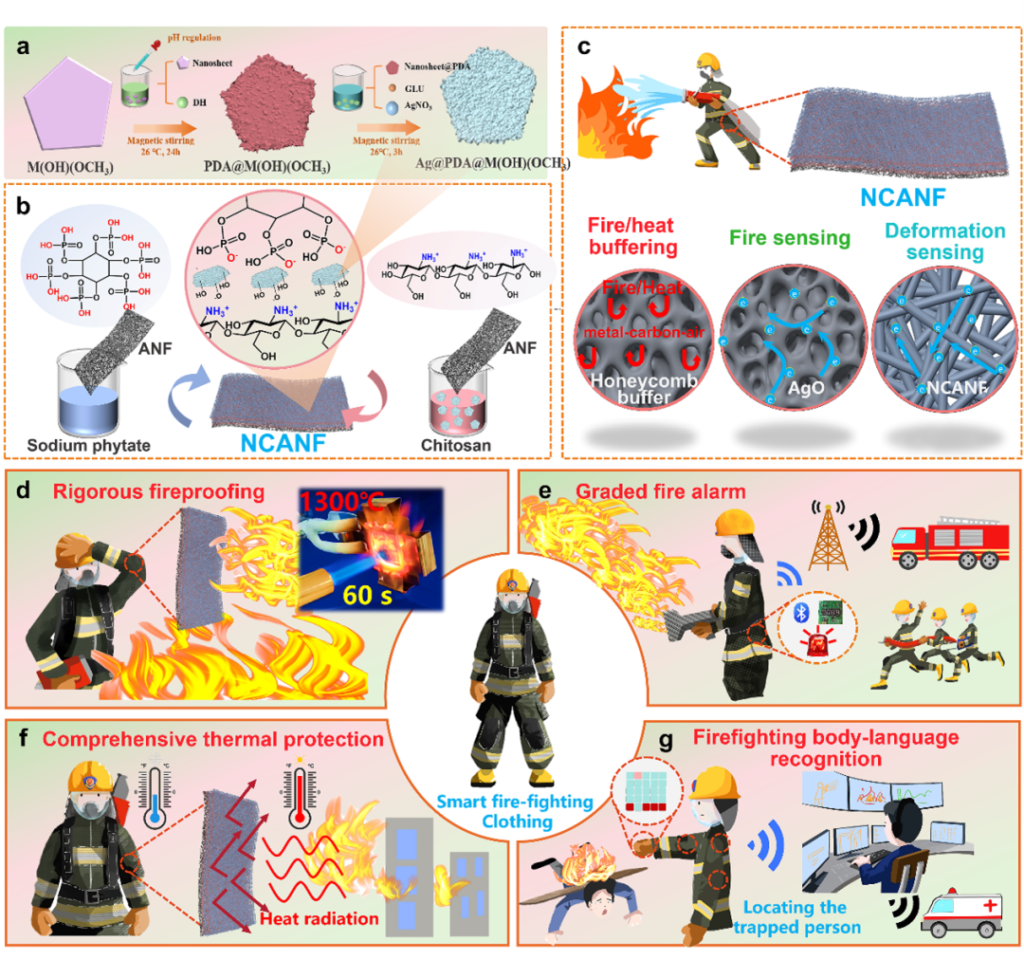
Superior Fireproofing and Thermal Protection
Under direct flame assault (1300°C), NCANF maintained structural integrity for at least 60 seconds, performing comparably to standard FU material. Its vertical burning damage length was only 0.5 cm, a marked improvement over untreated aramid fabric (ANF). Thermogravimetric analysis showed a high char residue of 53.83 wt% at 800°C for NCANF. Microscale combustion calorimetry revealed that NCANF’s peak heat release rate was 75.8% and 63.5% lower than ANF and FU, respectively. The excellent fire resistance is attributed to the formed honeycomb porous char structure, which acts as a robust barrier.
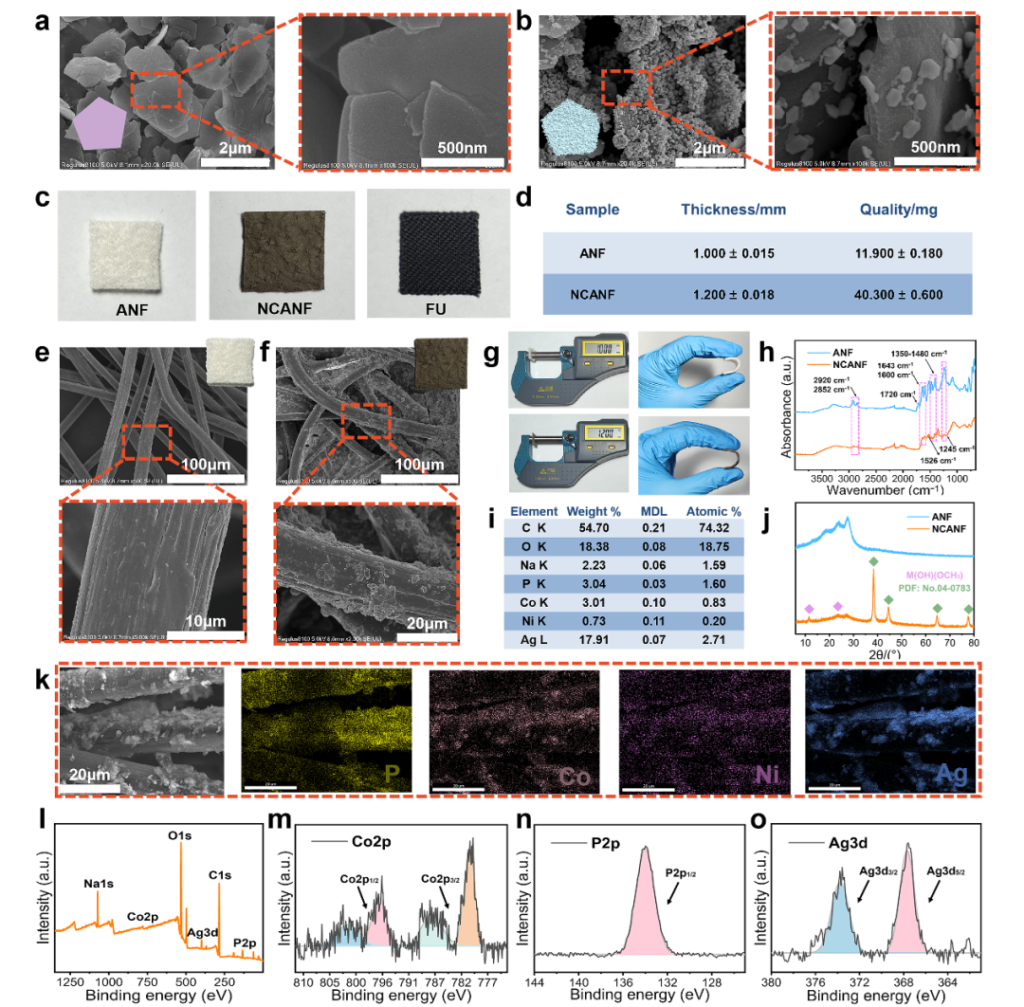
In simulated radiant heat environments, the backside temperature of NCANF was consistently about 20°C lower than FU after 30 seconds. NCANF also exhibits low thermal conductivity (0.043 W/(m·K)), effectively blocking heat transfer. Furthermore, the uniformly distributed silver nanoparticles on the aramid fiber surface contribute to thermal protection by efficiently reflecting infrared radiation.
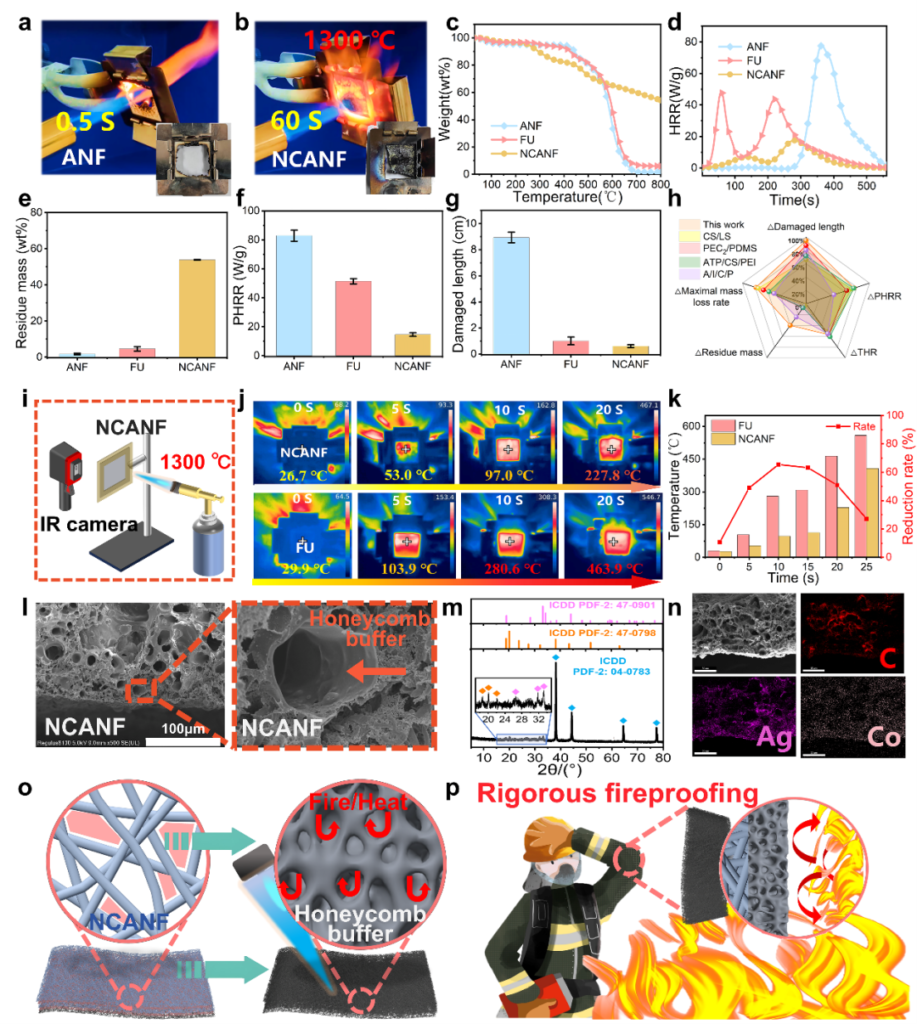
Graded Fire Alarm and Body Language Recognition
Leveraging its “thermal-resistance” response, NCANF enables rapid fire alarm functionality, triggering an alert in approximately 3 seconds of flame contact. By utilizing a precision resistance measurement circuit, the team developed a graded fire indication system where different alarm levels (visualized via LEDs) are triggered based on fire proximity and duration, allowing for assessment of fire severity.
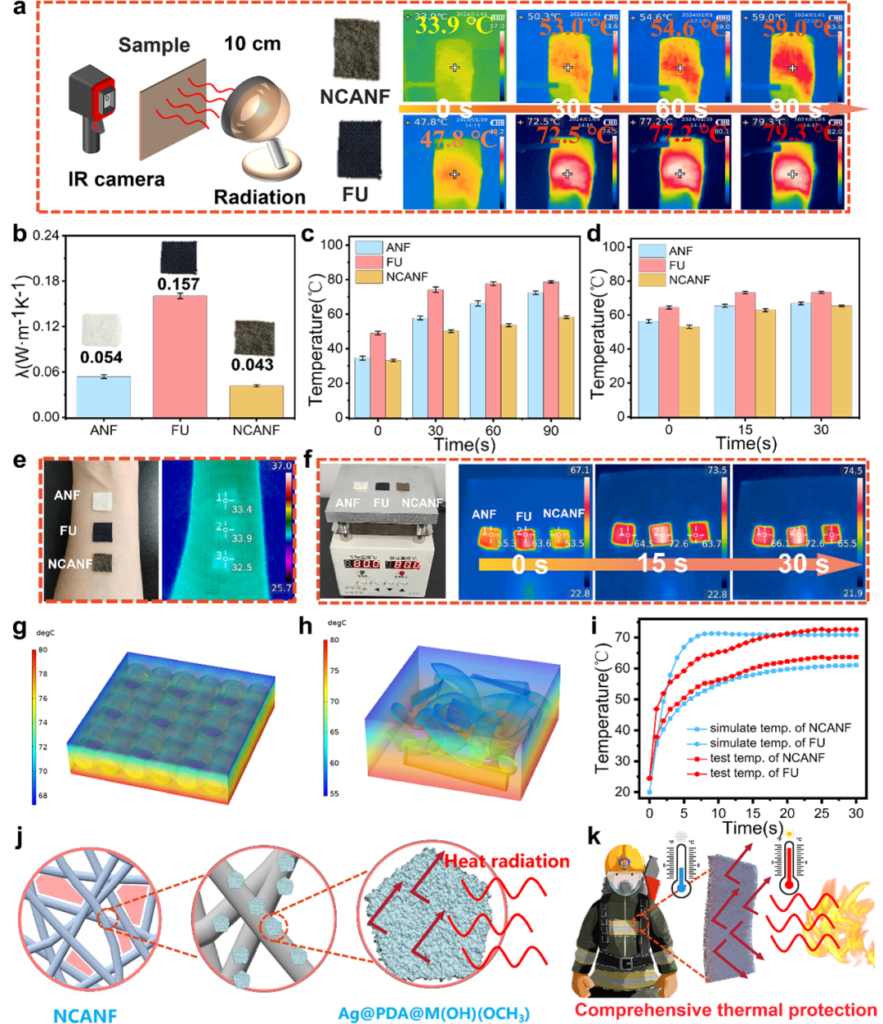
Furthermore, exploiting its “pressure-resistance” response, NCANF can be integrated into joint areas of firefighting suits, such as fingers, elbows, and shoulders. By monitoring resistance changes correlated with specific joint bending angles, the material can recognize static gestures and dynamic movements. This capability forms the basis for interpreting standard firefighting hand signals—such as “found trapped victim,” “danger,” and “received”—potentially enabling reliable action recognition and communication.
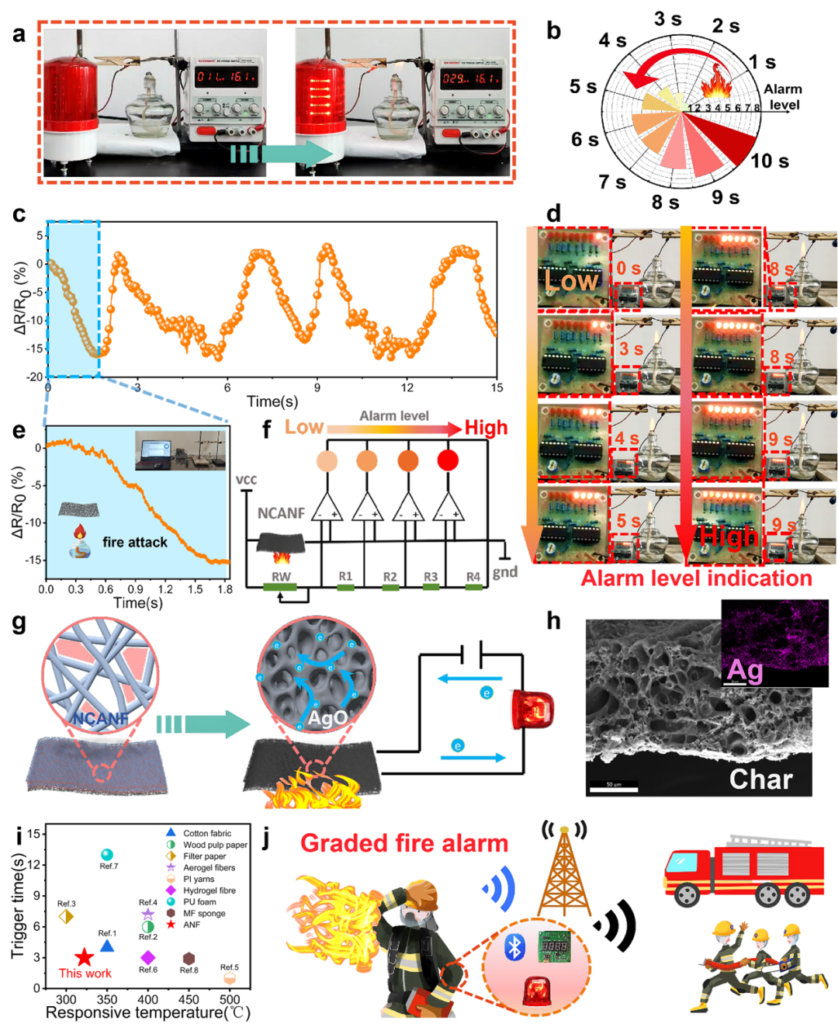
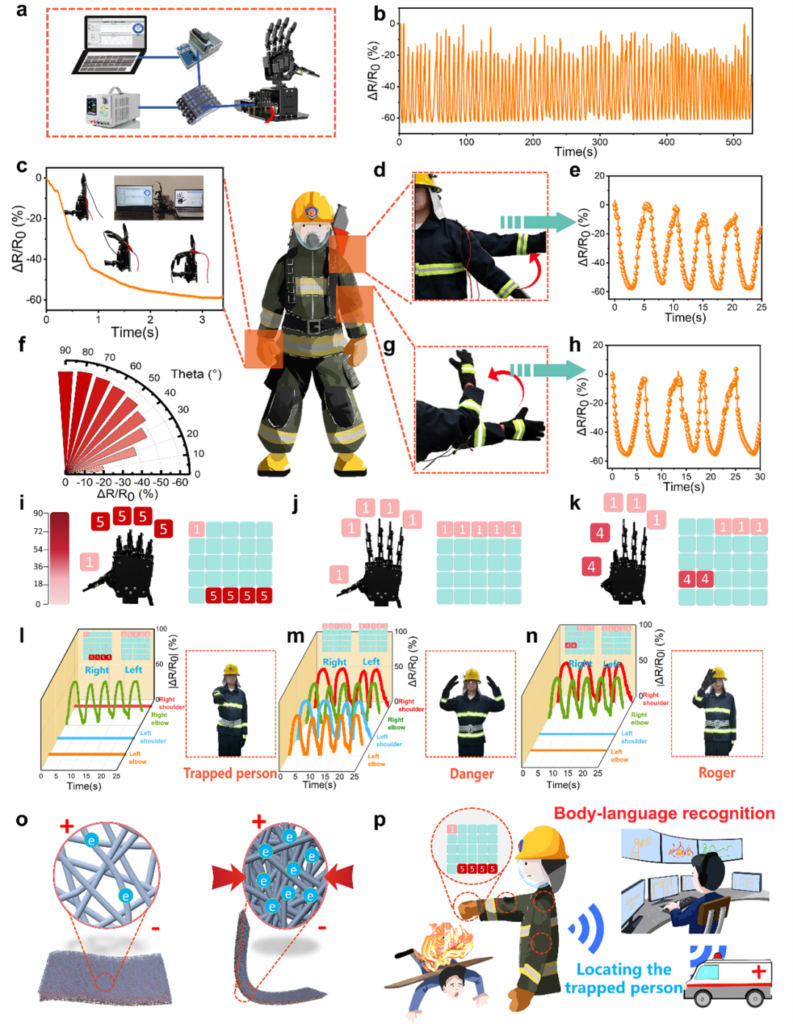
Conclusion and Outlook
This research demonstrates a significant advancement for aramid fiber, transforming it into a multi-functional platform for next-generation smart firefighting clothing. The developed NCANF addresses the crucial need for rigorous fireproofing that has hindered previous smart textiles. By integrating its thermal and pressure-sensitive properties with signal acquisition and transmission technologies, NCANF paves the way for establishing a connected rescue model based on real-time, on-site data collection, ultimately enhancing the efficiency and safety of firefighting operations.

